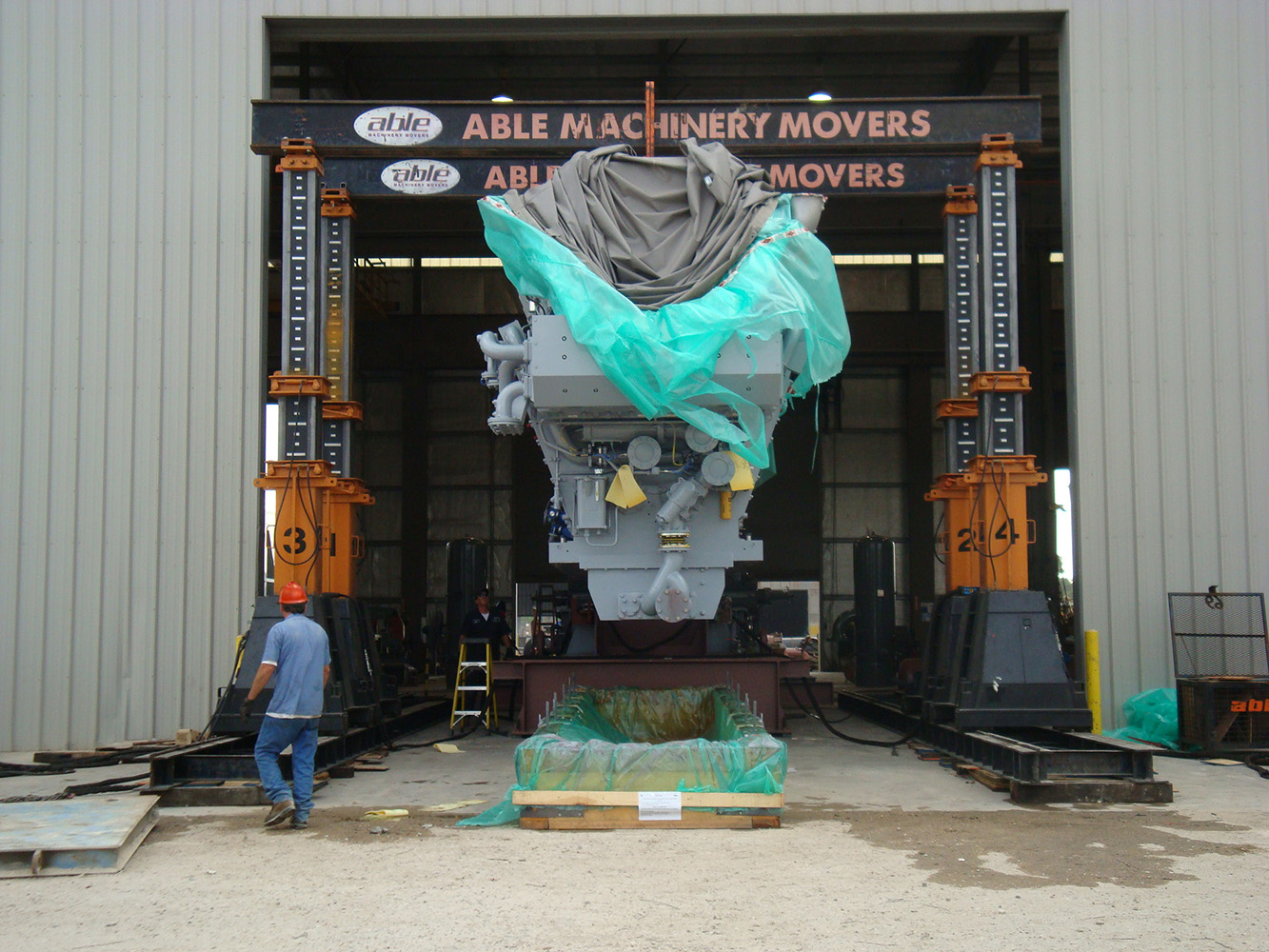What is Gantry?
Hydraulic Gantry Systems, also commonly known as gantry cranes, are equipment utilized to lift, erect, and move large heavy objects. They are often utilized in place of large cranes generally because of site conditions such as height restrictions or limited space for the footprint of cranes.
The advantages of a gantry system are that they are very portable and can be assembled and utilized in constricted conditions.
Gantry systems come in a variety of capacities, from 10 ton-1000 ton and are manufactured by several different manufactures. Each manufacture has their own proprietary design for their systems.
ABOUT THE GANTRY DESIGN
Each leg is calculated into the actual capacity of the gantry system. Gantry systems can be comprised of 2- or 4-leg configurations depending on the capacity required to accomplish the task being performed.
Gantry legs are comprised of rectangular base frames on heavy steel wheels with either a single multi-stage cylinder or multiple multi-stage cylinders attached to the base.
DIFFERENT TYPES OF GANTRY CRANE SYSTEMS
-
- Full Gantry Crane System – More common, larger, legs are attached to a rail system that allows for a range of movement, usually in a straight line
-
- Semi Gantry Crane System – One leg is attached to a rail system or wheels and the other leg is attached to a runway system that’s connected to the building, typically takes less floor space
-
- Portable Gantry Crane System – Smaller, used for lighter lifting, completely on wheels
HOW DO GANTRY SYSTEMS WORK?
Gantry legs are generally set on an engineered built-up track or steel plate that have guide rails attached so that each leg will travel in unison in a straight line. Each leg has a hydraulic drive that will propel them forward and backwards.
Once the track is laid out, the legs are placed on the track and the beams are attached to their opposing leg to span the load being lifted.
The engineered track is implemented into the design to distribute the weight load over the surface area being traveled.
Steel beams are attached on top of the legs to span across the perspective load being lifted.
Depending on the weight of the load, the span, and spacing of the lifting points on the beam, an engineered calculation is evaluated for the size beam required to handle the load on the beams.
Stationary D-Rings are placed over the lifting beam in order to attach shackles and rigging for the required lift. If lateral movement is required, hydraulic-driven traveling D-Rings are used instead of stationary D-Rings.
The Gantries are powered by either an electric or engine-driven hydraulic power unit that supplies the hydraulic-pressured oil thru flexible high-pressure hoses that attach to each leg of the gantry system.
The power unit can operate each independent leg or all at the same time. These units can monitor the amount of oil pressure being distributed to each leg and the elevation height in order to control their synchronization.
Once the load has been hydraulically lifted, each leg can then be switched to the travel mode with a valve lever. The load can then be traversed forward or backward along the track.
Generally, the Gantry system can be erected in less than 2 hours depending on the complexity of the job being performed. More complex lifts could take a lot longer depending on the loads being lifted and conditions of site.
READ MORE: Heavy Equipment and Machine Moving Solutions
